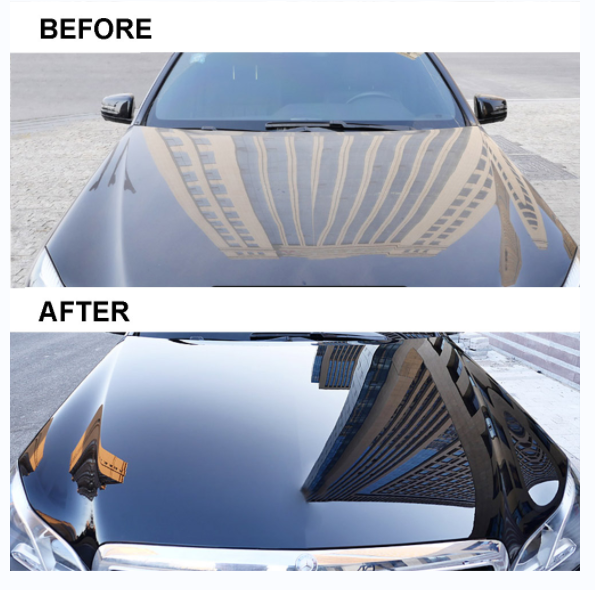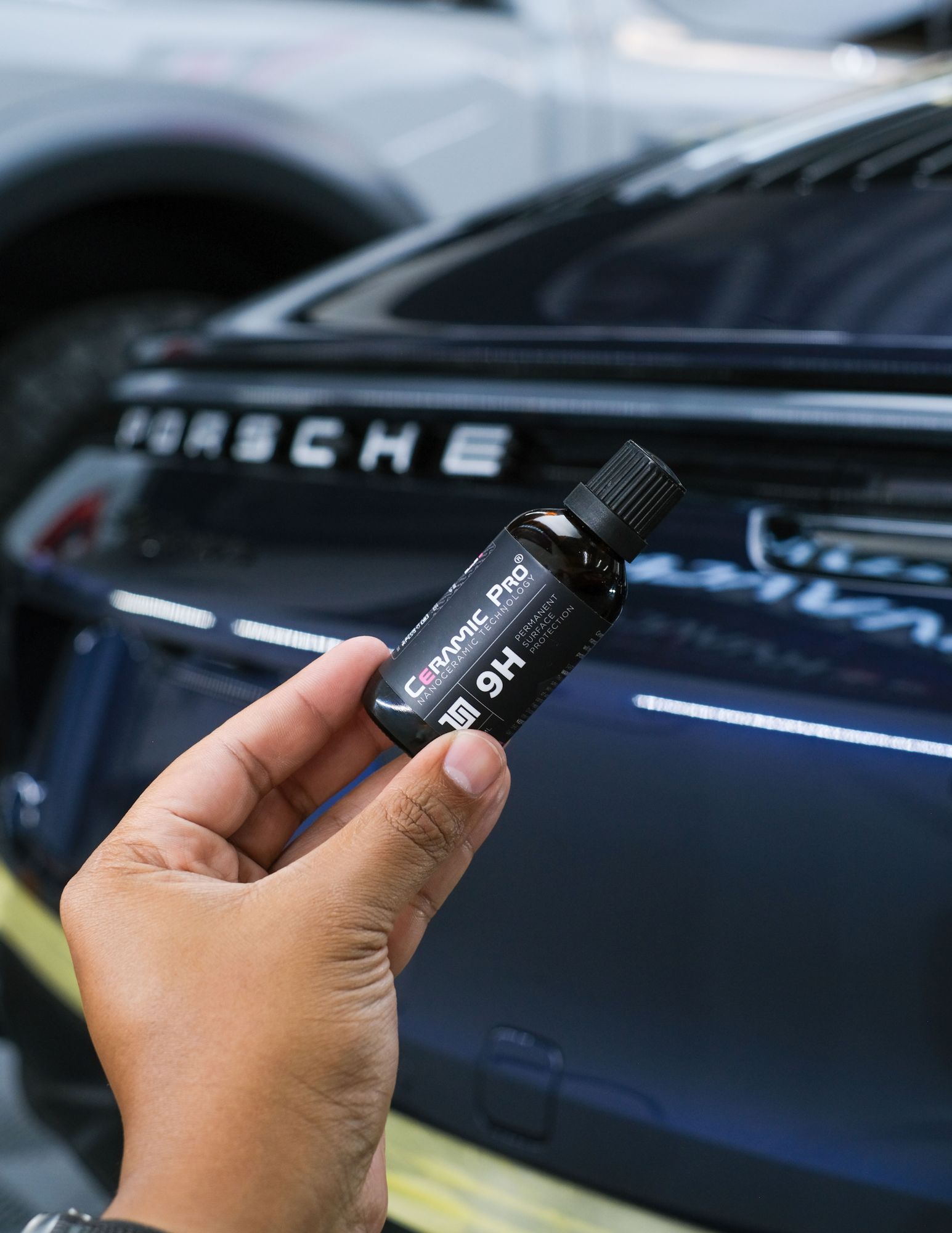Protect Your Car from the Elements with Ceramic Coating Technology
Protect Your Car from the Elements with Ceramic Coating Technology
Blog Article
Ceramic Finishing vs. Conventional Wax: Which Gives Much Better Long-Term Protection?
The debate in between ceramic layers and typical wax for automobile protection has gathered substantial interest among vehicle enthusiasts and experts alike. Ceramic layers boast premium durability and resistance to environmental factors, yet the intricacy of their application elevates questions about access and usefulness.
Summary of Ceramic Covering
Ceramic layer has actually gotten considerable popularity amongst automobile enthusiasts and detailers alike because of its advanced protective top qualities. This cutting-edge technology is created to produce a resilient, hydrophobic shield over a lorry's paint surface, substantially enhancing its resistance to environmental pollutants such as dirt, UV rays, and chemical discolorations. Unlike conventional wax, which gives a temporary layer of defense, ceramic finishes bond at a molecular level with the paint, providing resilient longevity-- typically expanding past two years with appropriate maintenance.
The application process includes careful preparation of the lorry's surface, including cleaning and brightening to guarantee ideal bond. As soon as applied, the layer cures to develop a robust layer that not only adds depth and gloss to the paint however additionally streamlines maintenance. With its hydrophobic buildings, ceramic coating allows water and dirt to glide off more quickly, minimizing the regularity of cleans and minimizing the risk of swirl marks.
Furthermore, ceramic layers are available in numerous solutions, enabling customers to pick products tailored to their particular demands and preferences. On the whole, ceramic finish represents a considerable improvement in paint defense innovation, providing exceptional efficiency compared to traditional choices.
Review of Conventional Wax
Traditionally considered a staple in automotive treatment, wax functions as a preferred choice for those looking for a simple technique to improve and safeguard their car's paint - ceramic coating. Automotive wax usually consists of natural components, such as carnauba, or artificial substances, designed to develop a safety layer externally of the paint. This layer not only improves the car's gloss and beam but also offers a barrier against environmental pollutants
The application of wax is usually straightforward, making it easily accessible for both professionals and do it yourself fanatics. It can be applied by hand or machine, enabling flexibility in the detailing procedure. When used, wax requires a healing duration, after which it sets to create a safety shell. Wax is also recognized for its capacity to ward off water, promoting a beading impact that aids in the avoidance of water places and deterioration.
Nevertheless, while wax works for enhancing the aesthetic appeal of a lorry, it is necessary to note that the defense it supplies may require more regular reapplication contrasted to alternative items, such as ceramic coverings. Overall, typical wax stays a preferred alternative for those focusing on simplicity of use and instant aesthetic improvement.
Longevity and Long Life Contrast
While both ceramic layers and conventional wax offer protective advantages for vehicle paint, their toughness and long life differ significantly. Standard wax, normally made from all-natural carnauba or synthetic polymers, typically offers a protective layer that lasts around three to six months. This fairly short lifespan necessitates normal reapplication to keep ideal protection.
On the other hand, ceramic coverings are engineered from sophisticated nanotechnology, developing a covalent bond with the paint surface area. This causes a robust, hydrophobic layer that can withstand for 2 to 5 years, depending upon the product and ecological conditions. The remarkable durability of ceramic layers is connected to their chemical framework, which supplies enhanced resistance to scrapes, UV rays, and oxidation.

Protection Versus Environmental Aspects
Securing a car's paint from ecological elements is critical for maintaining its appearance and worth in time. Vehicles are frequently subjected to a selection of elements, including UV rays, bird droppings, tree sap, acid rainfall, and road gunk, every one of which can compromise the honesty of the paintwork.
Ceramic finishes offer a robust protection versus these ecological click resources aggressors. Unlike conventional wax, which can weaken quickly under UV direct exposure, ceramic finishings create a durable, hydrophobic layer that withstands the harmful impacts of sunshine and toxic wastes. This sophisticated technology produces a chemical bond with the lorry's surface area, offering premium security that lasts for several years, even in harsh conditions.
In contrast, ceramic coatings keep their safety high qualities longer, dramatically decreasing the risk of paint damage and guaranteeing that the vehicle preserves its visual appeal. As a result, ceramic coatings are significantly acknowledged as the exceptional option for long-lasting protection versus environmental variables.
Application and Upkeep Differences
The techniques of application and succeeding upkeep for ceramic coatings and standard wax differ substantially, impacting the total individual experience and performance of each product. Ceramic finishes require an even more intricate application process, typically including surface preparation that consists of cleaning, decontaminating, and brightening the automobile. As soon as the surface is prepared, the ceramic layer is applied in a regulated environment, typically requiring professional competence to ensure appropriate treating and bonding to the paint.

While both products improve automobile look, the longer-lasting protection used by ceramic finishes might validate their preliminary investment, in spite of the more demanding application process. On the other hand, conventional wax stays a preferred selection for those looking for an easier, albeit temporary, service.

Final Thought
Finally, ceramic coverings demonstrate significant advantages over typical wax in terms of sturdiness and environmental management. With a life expectancy prolonging two to 5 years and remarkable resistance to UV rays, dirt, and chemical stains, ceramic layers use an extra efficient service for long-lasting automobile maintenance. Although the application process may require professional competence, the resulting cost savings and decreased frequency of reapplication underscore the value of ceramic finishings for those looking for optimum vehicle protection.
The dispute between ceramic coverings and typical wax for automobile protection has actually garnered substantial interest among vehicle enthusiasts and specialists alike. Unlike typical wax, which supplies a temporary layer of security, ceramic coatings bond at a molecular degree with the paint, supplying durable toughness-- commonly extending past 2 years with proper upkeep.
While both ceramic coverings and typical wax offer protective advantages for automotive paint, their longevity and longevity vary considerably. For car lovers looking for long-term security, ceramic finishes website here provide an news engaging benefit over conventional wax items.
In conclusion, ceramic coatings demonstrate considerable benefits over typical wax in terms of resilience and ecological protection.
Report this page